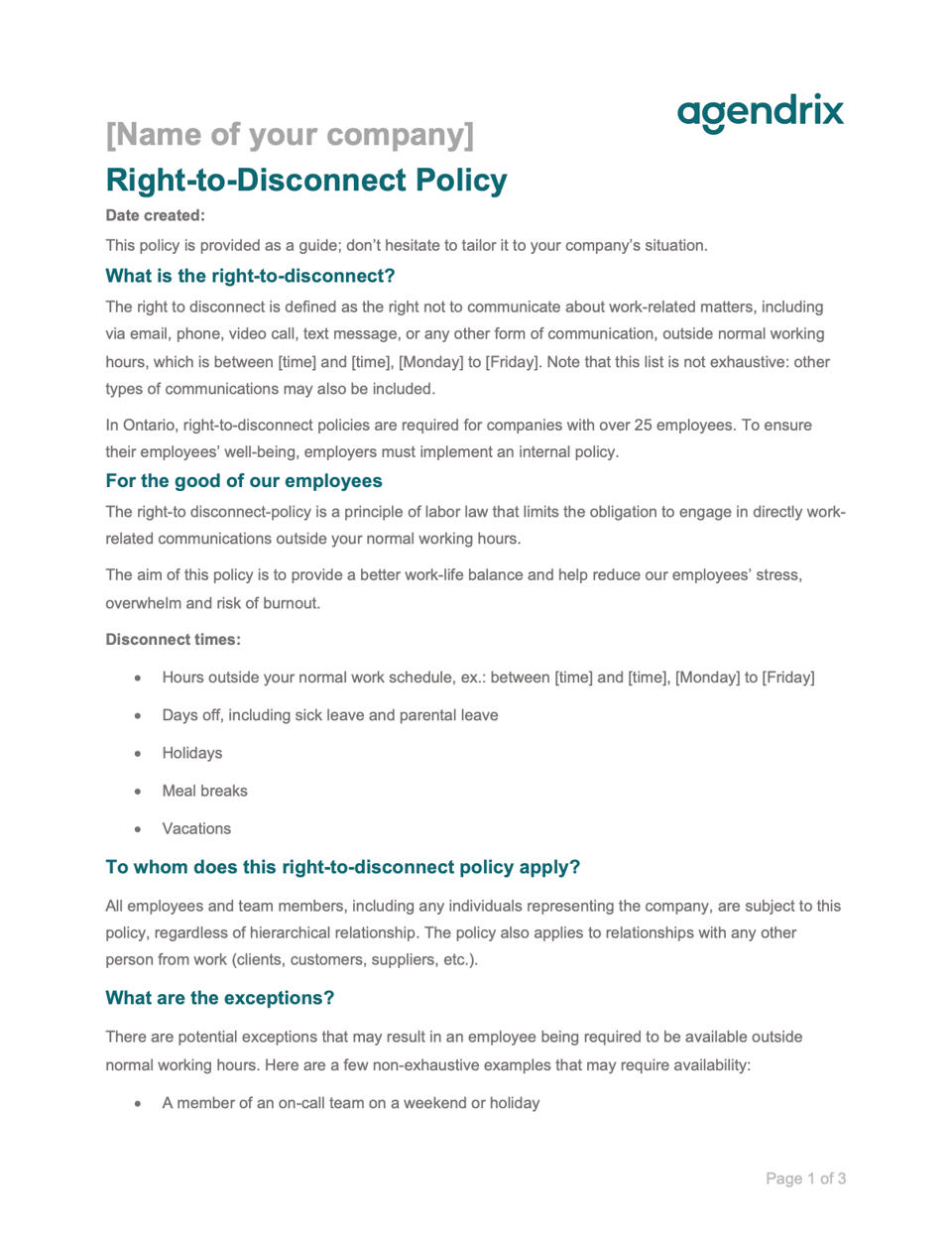
To which address should we send your resource?
What Is a Right-to-Disconnect Policy?
A right-to-disconnect policy is a set of rules that help make sure employees don’t have to respond to work-related communications, including emails, phone calls, video calls, text messages or any other form of communication, outside their normal working hours. Disconnect hours include days off, holidays and vacations.
Who Is Concerned by a Right-to-Disconnect Policy?
The right to disconnect applies to all employees of a company, be they full-time or part-time, permanent or contractual, telecommuting or at the office, located on the company premises or onsite with clients, on probation or on leave of absence (ex.: parental or sick leave), on strike or on lockout, and regardless of their seniority or level of hierarchy.
Professionals such as doctors, military personnel, firefighters and police are just a few examples where the nature of the profession requires workers to be reachable at almost any time. There are also some exceptions pertaining to the right to disconnect, such as on-call shifts/hours or business travel.
Why Is a Right-to-Disconnect Policy Necessary?
Establishing a right-to-disconnect policy can lower employees’ stress and overwhelm as well as their risk of burnout. In turn, a good work-life balance helps make employees more relaxed and more efficient. The positive impacts of the right to disconnect include reducing turnover and increasing the company’s attractiveness.
Is There a Law on the Right-to-Disconnect?
In Canada, each province and territory has the option of implementing a right to disconnect law. In Ontario, for example, companies with more than 25 employees are required by law to put a disconnecting from work policy in place and forward a written copy to all employees.
Contrastingly, in Quebec, right-to-disconnect policies are optional, although employers can still choose to implement a policy on their own.
In some European countries like France, the labor code includes laws that governs employees’ right to be inactive and unreachable outside work hours.
What Are the Benefits of a Right-to-Disconnect Policy?
Benefits include:
- Improved quality of life and job satisfaction for employees
- Lower absenteeism and higher efficiency at work
- Better attraction and retention of qualified personnel
- A better reputation for the organization
- Decreased pressure on human resources (employees) and increased pressure on business processes
How Is a Right-to-Disconnect Policy Established?
Steps to implement a right-to-disconnect policy should include:
- Getting informed and checking the laws in effect in the country and region where the company is located
- Surveying employees about disconnecting, including their questions and needs
- Putting the policy in writing and making sure that it applies to all employees (taking into account different roles, shifts and positions)
- Sharing the policy with employees and make it easily accessible (for example, in an HRIS).
- Asking managers to lead by example by enforcing the rules of the policy
- Updating the policy as practices evolve





